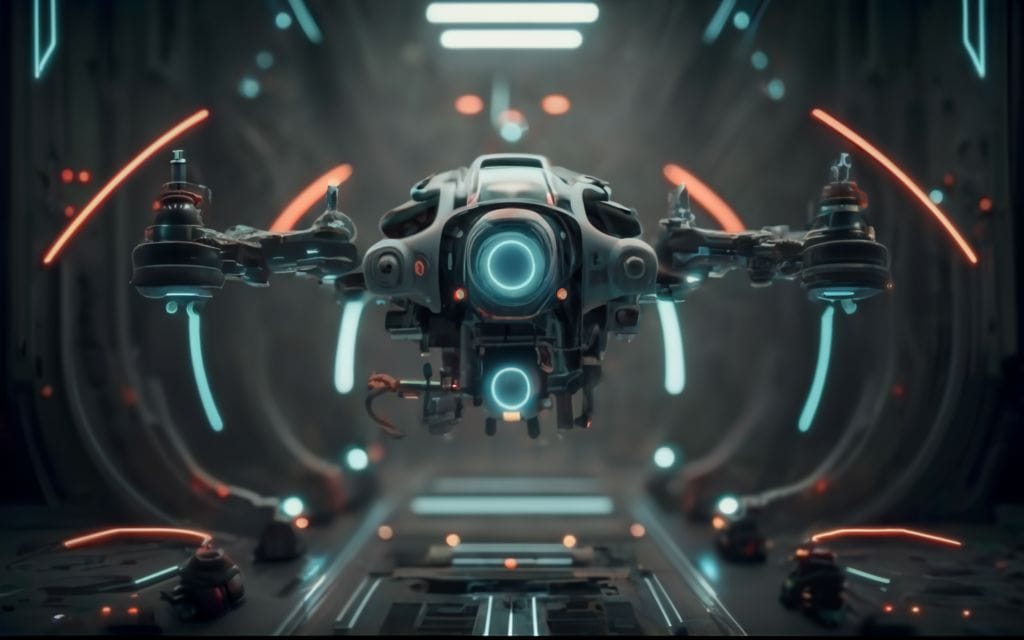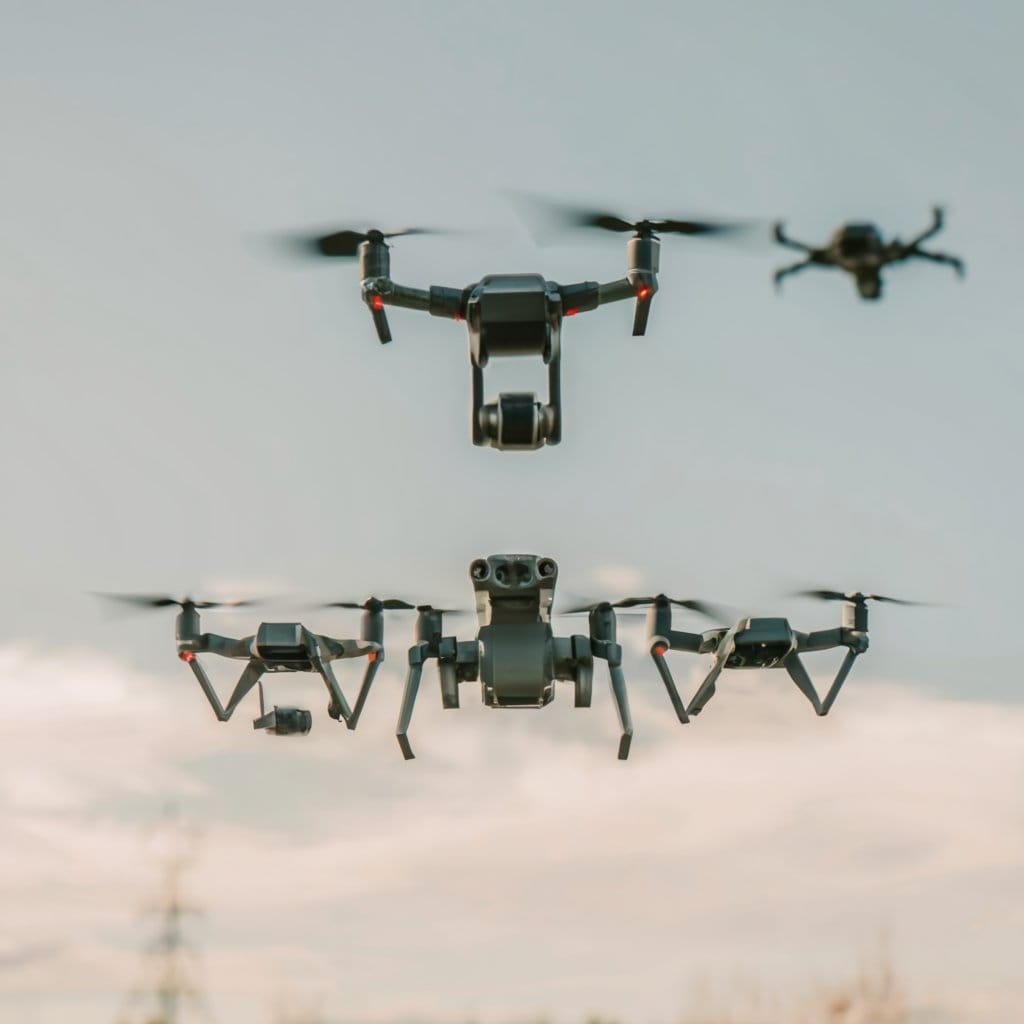Ever wondered about a device that combines the best of both worlds – land and air? Enter the realm of hybrid drones, where innovation meets versatility. These cutting-edge marvels seamlessly transition between flying high in the sky and manoeuvring on solid ground. Imagine having a single gadget that can soar above, capture breathtaking aerial shots, and then easily navigate tricky terrains. The hybrid drone revolutionizes how we perceive traditional drones, offering a fusion of capabilities like never before.
Understanding Hybrid Drone Technology
Benefits of Hybrid Drones
Hybrid drones are versatile aircraft that harness the advantages of both electric and combustion engines. By combining batteries with fuel, hybrid drones offer extended flight times compared to traditional electric drones. This hybrid technology enables these drones to stay airborne for longer durations, making them ideal for various applications such as aerial photography or surveillance.
Hybrid drones provide a unique blend of power sources, allowing them to achieve increased flight endurance while maintaining the flexibility needed for diverse missions. The ability to switch between battery power and fuel propulsion gives these drones an edge in terms of adaptability during flights. For instance, if a drone needs to cover long distances without frequent recharging stops, it can rely on its fuel-powered combustion engine until it reaches its destination.
- Longer flight times
- Enhanced adaptability during flights
- Ideal for applications requiring extended aerial coverage
Drawbacks of Hybrid Drones
While hybrid drones offer benefits like increased endurance and flexibility, they also come with some drawbacks. These drones tend to be more complex due to their dual-power system setup, which can lead to higher maintenance costs than purely electric or combustion-powered models.
Despite their improved flight endurance, hybrid drones may have limitations in terms of speed or agility when compared to specialized electric or gas-powered counterparts. The added weight from carrying both batteries and fuel can affect the overall manoeuvrability and performance of the drone.

Benefits of Hybrid Power in Drones
Longer Flight Times
Hybrid drones, combining electric and combustion power systems, boast extended flight times. By utilizing both power sources, they can stay airborne longer than solely electric or combustion-powered drones. This feature is advantageous for tasks requiring prolonged aerial surveillance or monitoring.
- Extended flight times
- Ideal for long-duration missions
Greater Range and Versatility
Hybrid drones offer enhanced range and versatility compared to their counterparts. The combination of electric and combustion engines allows these drones to cover more ground while catering to various applications like search and rescue operations over vast areas or agricultural surveys across expansive fields.
- Enhanced range capabilities
- Versatile for different tasks
Redundancy and Safety
The ability of hybrid drones to switch between power sources provides redundancy that enhances flight safety. In case one power system fails, the drone can rely on the other source, ensuring a safe landing without compromising the mission’s success.
- Increased safety measures
- Redundancy for uninterrupted operations
Longest Endurance and World Record Flights
Record-Breaking Achievements
Hybrid drones have shattered endurance records, showcasing flights lasting several hours. These remarkable feats demonstrate the cutting-edge capabilities of hybrid technology in the drone industry. For instance, some models have astoundingly flown for over 10 hours continuously without needing to refuel or recharge.
These record-breaking achievements highlight the prowess of hybrid drones and set new benchmarks for endurance in unmanned aerial vehicles (UAVs). By pushing the boundaries of flight duration, these drones are revolutionizing industries such as surveillance, mapping, and search and rescue operations. The ability to stay airborne for extended periods enables them to cover vast distances and conduct prolonged missions efficiently.
- Extended Flight Duration
- Revolutionizing Industries
- Efficient Mission Execution
Possibilities for Extended Missions
The exceptional long-endurance capabilities of hybrid drones open up a world of possibilities for various applications. Imagine using a hybrid drone with advanced sensors to monitor wildlife in remote areas continuously. With its ability to stay aloft for hours on end, it can gather crucial data without frequent interruptions.
Moreover, in emergencies like natural disasters or accidents, these drones can provide continuous aerial support by conducting search operations tirelessly. Their capacity to remain operational for extended durations enhances their effectiveness in critical scenarios where every minute counts.
- Continuous Data Collection
- Uninterrupted Aerial Support
Professional Applications and Customization Options
Versatile Use
Hybrid drones find use in various professional areas like aerial photography, surveying, and inspection. Their adaptability allows for the integration of different payloads tailored to specific requirements. For instance, attaching a thermal camera enables them to capture heat signatures efficiently.
Hybrid drones are highly customizable with options such as LiDAR sensors or multispectral imaging systems. These features provide professionals with diverse tools for their tasks. By customizing the drone’s payload based on the project needs, users can achieve precise data collection in fields like agriculture or infrastructure inspection.
Diverse Applications
The flexibility of hybrid drones extends their application across multiple industries. In agriculture, they can be equipped with sensors to monitor crop health or irrigation levels effectively. Similarly, in construction, these drones aid in tracking progress and ensuring safety compliance on job sites.
Sensor Payloads and Panoramic Capabilities
Advanced Sensor Payloads
Hybrid drones are equipped with advanced sensor payloads that can capture high-resolution images or videos. These sensors allow for precise data collection, essential for various industries like agriculture, construction, and environmental monitoring. The ability to carry different types of payloads makes hybrid drones versatile tools.
- Pros:
- High-resolution imaging capability
- Versatility in payload options
- Cons:
- Increased weight due to advanced sensor systems
Panoramic Imaging
The panoramic capabilities of hybrid drones enable detailed mapping and surveillance over large areas. By operating these drones, users can gather comprehensive data about vast landscapes efficiently. For instance, in agriculture, farmers use panoramic imaging to monitor crop health across extensive fields easily.
- Key Information:
- Hybrid drones provide a wide view of the entire perimeter.
Examples:
- A construction company uses a hybrid drone with panoramic capabilities to survey a large building site quickly.
- Environmental researchers utilize hybrid drones for aerial surveys covering vast forested areas.
Extending Range and Fast Recharging Features
Extended Flight Endurance
Hybrid drones, with their dual power sources, can cover longer distances compared to traditional drones. By combining the capabilities of electric batteries and gasoline engines, hybrid drones can fly for hours without frequent recharging. This extended flight endurance allows them to reach remote locations or survey vast areas without returning for a battery swap.
- Hybrid drones have extended flight endurance.
- Dual power sources enable longer-distance coverage.
- Ideal for reaching remote locations or surveying large areas.
Quick Battery Recharge
One significant advantage of hybrid drones is their fast recharging options for the battery component. Unlike fully electric drones that may require lengthy charging times between flights, hybrid drone batteries can be quickly replenished. This feature reduces downtime significantly, allowing operators to resume missions promptly and complete tasks efficiently.
Security and Connectivity in Hybrid Drones
Advanced Security Features
Hybrid drones are equipped with top-notch security measures like encrypted communication channels and geofencing capabilities. These features ensure that the drone’s data transmission remains secure, safeguarding it from unauthorized access or interference. For instance, encrypted communication channels protect sensitive information during flight operations.
Geofencing is another crucial security feature present in hybrid drones. It establishes virtual boundaries, limiting the drone’s movement to designated areas only. By setting up these geo-boundaries, operators can prevent the drone from entering restricted airspace or flying into potentially hazardous zones inadvertently.
Seamless Connectivity Options
Hybrid drones offer seamless connectivity for real-time data transmission and remote control functionalities. This means that operators can receive live updates on the drone’s status, location, and performance metrics instantly. With such robust connectivity options, users can effectively monitor and control their drones from a distance without any delays or disruptions.
- Pros:
- Enhanced security measures ensure data protection.
- Geofencing capabilities help maintain safe flight paths.
- Real-time connectivity allows immediate monitoring of drone activities.
Future of Hybrid Drone Technology
Longer Flight Times
Hybrid drones are poised for longer flight times, thanks to advancements in battery technology. WaveAerospace is at the forefront of developing high-capacity batteries for hybrid drones. With these innovations, hybrid drones can stay airborne for extended periods, benefiting various industries like agriculture and surveillance.
- Pros:
- Extended operational time
- Enhanced efficiency in completing tasks
Improved Performance Through AI Integration in Aviation
The integration of artificial intelligence (AI) with hybrid drone systems will significantly enhance their performance. By leveraging AI algorithms, drones can make real-time decisions during missions autonomously. For instance, WaveAerospace’s hybrid drones equipped with AI can adapt to changing weather conditions while conducting aerial surveys.
So, there you have it! Hybrid drones are revolutionizing the skies with their extended endurance, customizable features, and top-notch security. From professional applications to record-breaking flights, these drones are paving the way for a new era in aerial technology. As we look to the future, the possibilities seem endless for hybrid drone technology. Ready to take your drone game to new heights? Explore the world of hybrid drones and discover how they can elevate your aerial experiences. Whether you’re a professional looking to enhance your operations or a hobbyist seeking longer flight times, hybrid drones offer a unique blend of power and efficiency that’s hard to beat.



